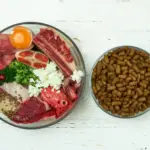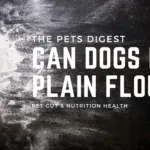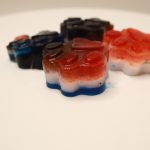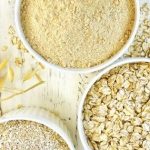Choosing dog food or cat food for your pet is pivotal in promoting the best health and life possible for your fur baby. When feeding your dog or cat you should always take your time to read not only the ingredient label but know how to decode the manufacturer’s labels.
Product Name
The product name is the first thing you should look at since it tells you a ton about the actual protein content in the food. Manufacturers do have rules they must go by when naming their dog foods per the AAFCO or The Association of American Feed Control Officials
The “95%” rule
Products that list the protein content on the front of the bag must have at least 95% of the food type listed in the formation. For example “Salmon Cat Food” or “Chicken for Dogs“. Note that this is without the water added before processing, if the water content is included in the name of the named ingredient must still comprise 70% of the product listed. If there are two proteins included both the ingredients together must comprise 95% of the total weight but the first one listed should comprise the highest amount of the two.
The 25% rule
Also known as the dinner rule: this applies to canned and dry products, if the named ingredient comprises at least 25% of the product but less than 95% the name on the bag will have a descriptive term such as dinner, platter, entree, nuggets or formula in the name. If water is counted, the ingredients must still make up 10% of the product.
For example in a product named “chicken entree” for dogs only 1/4th or a quarter of the product has to be chicken and it is probably third or fourth on the ingredient list
The 3% rule
is applied to ingredients highlighted on the principal display panel but outside the product name and are minor ingredients. For example, the name could read Salmon Dinner Cat Food with shrimp if there is at least 3% shrimp
The Flavor rule
there is no specific percentage required but a product has to contain a sufficient amount to be detected when eaten. These do not have to actually be the meat stated, for example, Chicken flavored does not necessarily mean chicken is in the formula

Manufactured by vs Manufactured for
The manufacturer is the party responsible for the quality and safety of the product. Companies will provide their name and mailing address but are not required to include a telephone number.
- Manufactured by usually indicates that the food was made by the company itself and they have a lot more control over the process of making the food and quality control.
- Manufactured for usually indicates that the food was outsourced (USFDA, 20120)

Nutritional adequacy
Nutritional adequacy statements indicate whether a product is “complete and balanced” according to the AAFCO guidelines
Dog foods that claim to be “complete and balanced” have to have either
- Formulated to meet specified nutrient levels as established by the AAFCO
- The product must be tested using an AAFCO Feeding trial protocol
Guaranteed Analysis
This is the list of minimums and maximums that you see on the side of the packaging, it often contains:
- minimum/maximum: crude fat
- minimum/maximum: crude protein
- minimum/maximum: crude fiber
- minimum/maximum: crude moisture
- ash content (the foods mineral content): most food companies do not list this as they aren’t required to
- carbohydrates: may or may not be listed as dog food companies are not required to list carbs in their formulas
Minimums and maximum levels don’t necessarily match the actual amount contained in the food, if you want to know the average you should contact the food company. This is especially true if your dog has a condition like pancreatitis or colitis.
Note: Crude often refers to how the nutrient was measured

Ingredients
Ingredients are usually what owners zone in on when looking at a new brand of dog food for their pups and rightfully so since it is extremely important to know what your pet.
Ingredients are listed in descending order according to their weight, with the ingredient weighing the most at the top of the list. But since ingredient weights are listed with their initial water content (much of the water is extracted during the drying and/or cooking process) this may not necessarily be an accurate picture of what is truly included in the final bag of dog food.
To accurately determine the amount of nutritional value of two foods you have to remove the water content and convert the ingredients to a dry matter or DM basis. For example, if meat is listed first but is 70% water, it is weighed with the water, but after drying there may only be 20% actual meat content left in the formulation.
How to convert fed basis to dry matter (DM) basis
Subtract the percent of the foods moisture content from 100 to determine the dry matter (a kibble conatint 10% moisture will contain 100% dry matter)
To determine the amount of protein on a DM basis: take the crude protein listed under the Guaranteed analysis on the food label and divide the number by the DM number frrom step one. For example if the foods listed guaranteed analysis of 20% protein then you would calculate 20 divided by 90 which equals 22% so the food contains 22% proten on a DM basis
The first ingredient is usually meat and you should bypass the food if the type of meat is not listed.
The second ingredients listed are usually grains and fats: look for whole grains like brown rice

Feeding directions
The feeding directions are the manufactures recommended daily intake usually in cups or cans per your dog’s weight. Keep in mind that these are just recommendations and they are usually an overestimate of the amount you should feed your dog so use them as guidelines only. Speak with your vet to come up with a feeding plan and read our article about how much you should feed your dog as well.
The food you choose to feed your dog plays a pivitol role in their overall health and longevity

Calorie Count
While companies aren’t required to list the number of calories in their food some will do so. This is especially great for owners who want to keep an eye on their dog’s calorie intake for weight loss reasons. Calories are expressed in kilocalories per kilogram or kcal/kg (kilocalories are the same as calories on human food labels and a kilogram equals 2.2 pounds)
If calories are listed it will reflect an “as fed basis” so you will have to factor in the water content

Other Common Terms Listed
Natural
The FDA considers the term natural to mean nothing artificial or synthetic. Note that natural and organic are not the same. Natural can simply mean that the food you’re feeding your dog has no artificial flavors, colors, or preservatives.
Limited Ingredient
These diets have a smaller amount of ingredients than most of their counterparts and are usually chosen for dogs that have food sensitivities or intolerances that cause allergies or gi upset. They are also often used in hypoallergenic dog food trials.
New or Novel Proteins
While these aren’t usually new proteins to some dogs they may be new to your dog. Most dogs in the US are used to eating chicken, lamb, beef, or salmon and as a result, can develop allergies to them. Owners may start their dog on a ‘novel’ or ‘new protein’ diet if they have developed sensitivities to these proteins. It should be noted that a dog can eventually develop allergies to novel proteins as well.
Human-grade dog food
To be labeled as human-grade, dog food has to be legally edible and approved as food for humans as determined by the FDA. According to the AAFCO, for a product to be deemed edible for humans, all ingredients must be human-edible and the product must be manufactured, packed, and held in accordance with federal regulations
References:


























































































































